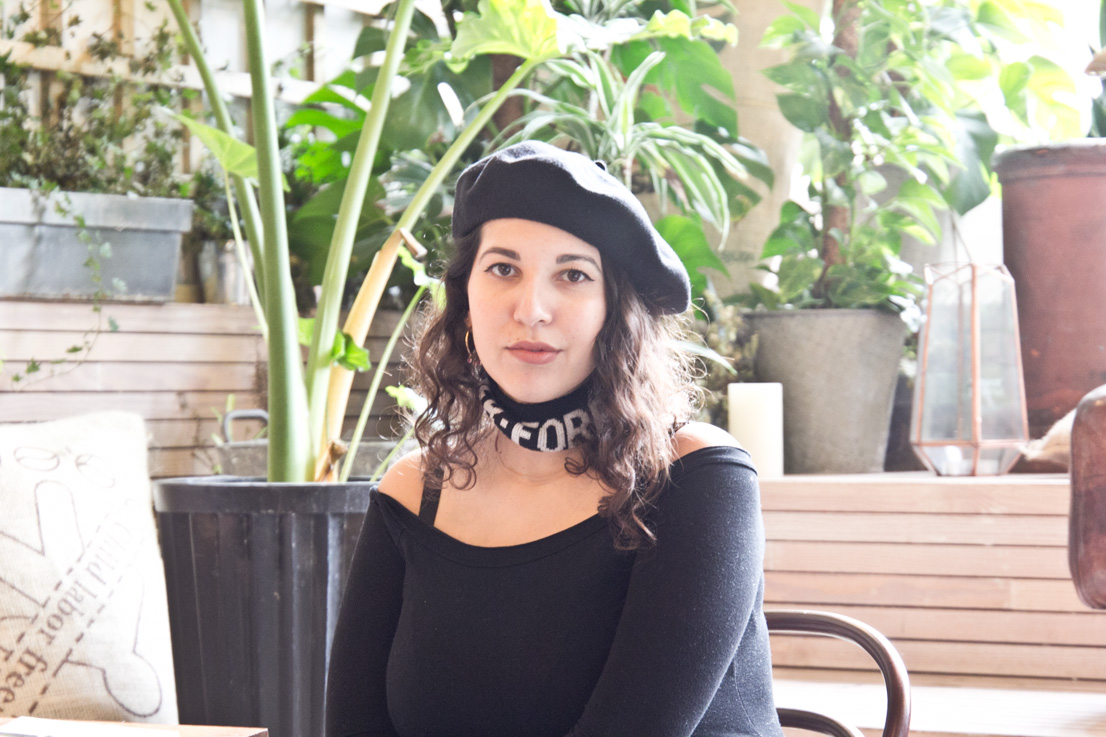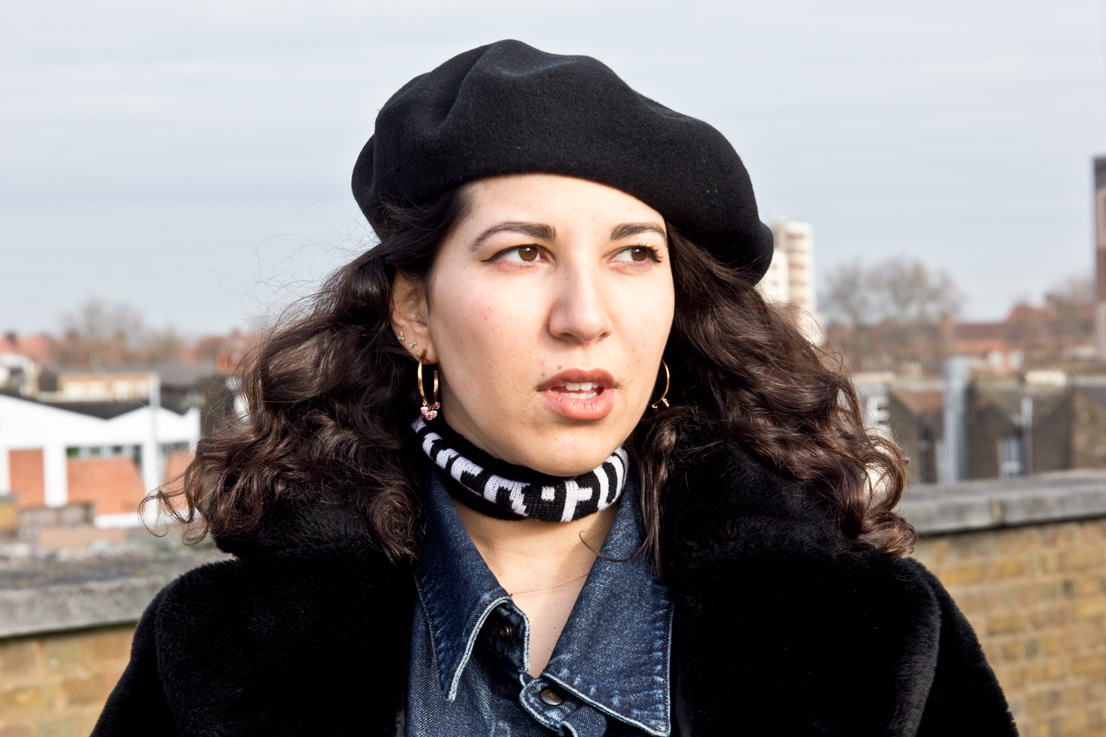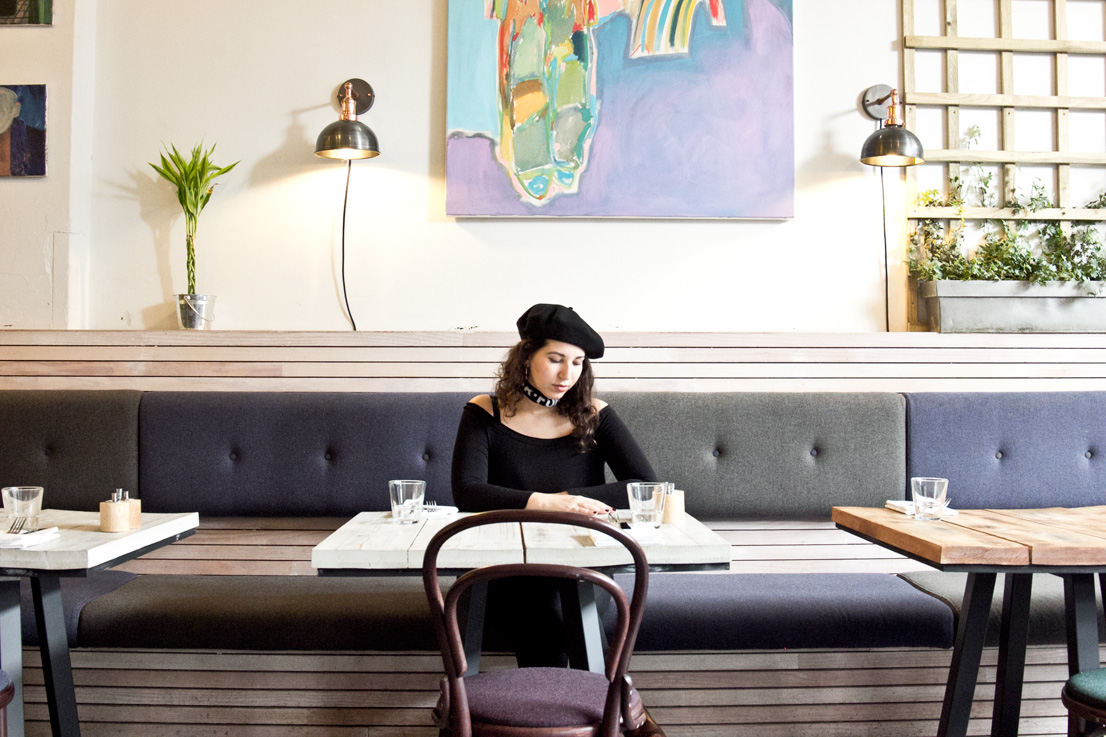Even doing what we do, it’s a rare thing to come across people who have had such a profound influence on our personal approach to fashion. You know, the kind who have been dictating the way we dress from behind-the-scenes, without us even realising. See, that’s exactly what Avigail Collins has been doing for the past decade. First with Silver Spoon Attire, the label she founded with husband Damian in 2008. You know, the one that instantly made you want to go out and buy a beanie with a veil attached the moment Rihanna was rocked one in London on stage at the Watch The Throne tour back in 2012. Oh, and that’s just one point on her CV. She’s also on speed dial to just about every musician that’s been culturally (and sartorially) relevant over the past decade. Let’s just say that her past and present client roster includes the likes of Ellie Goulding, Lorde, Jessie Ware, Rita Ora, Pixie Lott, Daisy Lowe and Tinie Tempah. Then there’s the string of fashion editorials in the pages of Italian Vogue, i-D magazine, Vanity Fair and British Vogue too.
During her time studying fashion design at London College of Fashion she began taking images of friends wearing their own clothes or finds picked up around Brick Lane, where she lived at the time. Gradually the experimental shoots turned into fully-fledged design collections, spinning off of school assignments. The fruit was a small capsule collection of leather jackets, which, she tells me, was all about offering girls the kind of oversized ‘boyfriend’ styles guys had always had access too. She posted photos of the collection online and Nylon magazine quickly called. From that one picture, the duo were listed in British Vogue as ‘designers to watch’ too.
What Avigail is most known for, though, is work with Rihanna, who she’s been styling while the star is in Europe since her Umbrella days. Remember when Rihanna stepped out in that bod-con Mark Fast dress? Or when she donned that slinky green Stella McCartney dress at the designer’s London show back in 2012? Yep, that was all Avigail. She’s pretty much been the singer’s go-to person, filling her in on all of the British independents and emerging designers to get in on first, for the past decade.
When we meet in Silver Spoon’s East London HQ, she’s busy. It’s just a week before the Brits and she’s dressing a host of stars and their dancers. She’s also in midst of selling the brand’s latest collection to stores and has just signed a huge deal that I’ve been sworn to secrecy about, but will be revealed later on this year. Oh, and she just happens to be heavily pregnant too. Despite the mounting pressure, she’s in high spirits, bouncing from one crazy tale to another, laughing in her distinctive Leeds drawl. It’s clear she’s passionate about her work but isn’t defined by the world she inhabits; qualities that have kept the stars loyal. She isn’t one for the spotlight – she lets her work do the talking – yet she understands the importance of self-promotion and is the first to admit that networking and not being afraid to reach out to people has proved one of the biggest contributors to her success.
Her job has changed ten-fold since she started. If a client is about to embark on a world tour, she often works with designers on creating custom stage outfits. International promotional tours now mean endless dinners, launches, parties and in turn, even more photo opportunities and outfits to organise. She enjoys the challenge, she admits, as it’s moments like these where she’s able to introduce emerging British designers to an international audience. Think of any big British designer right now and you can be rest assured that she’s supported them in some way with one or more of her clients.
Here she talks candidly about getting her foot in the door, the importance of thinking commercially in fashion and why she’ll never stop learning.
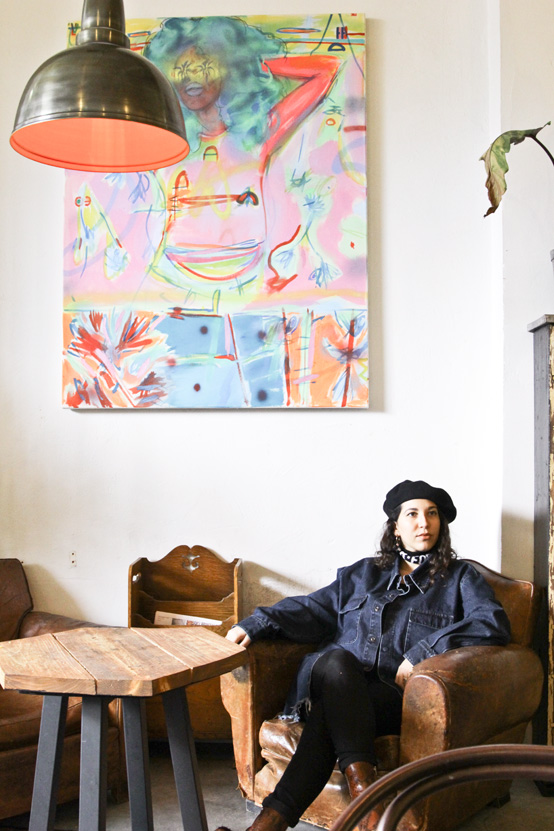 On what sparked her interest in fashion: My mum always had lots of silk scarves so I was always making things from them. It quickly turned into a business because I started making and selling them to people when I was about 14. My nana was always really creative and would make me Barbie clothes from scratch so I grew up seeing her make things. I don’t know, I think it was just a natural thing. My mum always says that even at the age of four I was making hats. I used to collect things and put them on my hats. All of a sudden they would have buttons, flowers and all of these different things on them. The design aspect is something that always came naturally to me whereas styling wasn’t something I knew about until I was actually in the industry. Living in Leeds, I didn’t know what a stylist was. I didn’t really learn about that until I was in university in London.
On what sparked her interest in fashion: My mum always had lots of silk scarves so I was always making things from them. It quickly turned into a business because I started making and selling them to people when I was about 14. My nana was always really creative and would make me Barbie clothes from scratch so I grew up seeing her make things. I don’t know, I think it was just a natural thing. My mum always says that even at the age of four I was making hats. I used to collect things and put them on my hats. All of a sudden they would have buttons, flowers and all of these different things on them. The design aspect is something that always came naturally to me whereas styling wasn’t something I knew about until I was actually in the industry. Living in Leeds, I didn’t know what a stylist was. I didn’t really learn about that until I was in university in London.
The importance of traditional training as a designer: When I started my fashion design course I never thought of myself as being a stylist. I think even when I signed up, I didn’t know what a stylist was. When I was at university I learned all about that side of it but fashion design was always the focus. For me, it has always been really important to have that technical knowledge and be able to make clothes. It’s definitely beneficial working with musicians – you know, being on set and being able to take something, take something in or do something to completely change an item is so important. It works wonders and really helps not to have to have a tailor there. Even if you do have a tailor on set, it’s always good to be able to talk knowledgably about what you want. But everyone’s different and you can totally learn all of that on job, working with the right person.
On moving to London from Leeds to attend London College of Fashion: It was the best time ever. I’m still friends with so many of the people on my course. University was the best experience, especially living in Brick Lane. It was ten years ago now so Brick Lane was really bubbling. It was so incredible. Just walking out of my front door fed my creativity. Sometimes we would stay in and then get a buzz of energy at 1am and just get up and walk down the street and take pictures and see what was happening. It was such an amazing place to be. It fed my creativity in such an incredible way. It’s really nice because I feel like everyone on my course has stuck to fashion and gone in really interesting directions. I have a friend who lives out in Mexico. She’s an underwear designer and I’ve done lots of exciting projects with her in my styling work. She’s made incredible pieces for me and beautiful stage pieces for clients of mine too. It’s nice to work with people like that whom I’ve grown with.
Working with small brands versus the big guns: It’s really important to me to work with emerging talent. It’s really important to me. I love the Guccis of this world and all of the big brands – they excite me – but it’s the smaller brands that I can really make a difference with. Anyone can become a stylist and put an artist in a Gucci suit but you really need to do your research to find out who’s next. It’s also really nice to watch a brand and see how they grow. When you’re working with new musicians, it’s important that they can grow with a brand too. It can be quite complimentary to their careers and their music if they’re working with a designer from the early stages. They can meet them and really collaborate. We’ve worked on lots of custom pieces with small, up and coming British designers and it’s been so nice for the musicians to be able to go to their studios and see how that process works. When you’re working with a massive fashion house, it’s a completely different story. It’s not quite as one-on-one. But I love doing the other side just as much. I worked with Miu Miu on Jessie Ware’s Brits outfit and that was incredible, being able to work with their design team. They would send sketches and ideas over and we’d go back and forth to find something that worked. I love that. I think both sides are important. If you want to be a good stylist, it’s important to be good at both.
Putting Rihanna in Mark Fast was one of the first things we did. I had just been to his first show and back then, he didn’t even have a PR. It just so happened that someone that was working for him lived round the corner from me so when I got in touch, she brought the dresses for Rihanna round to my house.
On always being pro-active long before she graduated: People rely on social media to do that these days. With me, I put it down to my husband. We always wanted to work together. He didn’t go to university so he was already a step ahead of me when it came to business. He had already set up and sold his own street wear brand and wanted to create something luxury. I feel like my university experience was almost like his university experience too because he would always be around when I was stressing about my work. He would take my ideas and put it into practice and think about how we could turn it into a business that makes money.
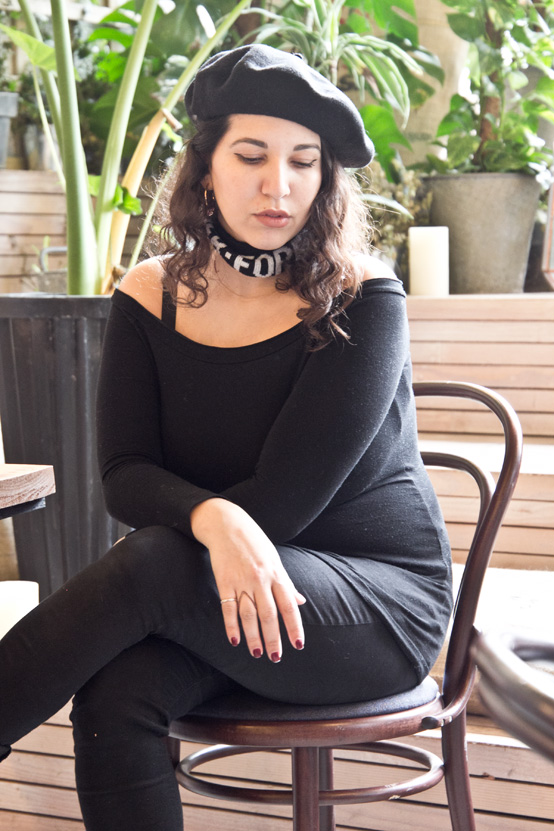 On their work dynamic: In the beginning we did everything together because it was exciting and neither of us wanted to miss out on one thing but now it’s very separate. I do all of the styling but when it comes to the brand, the design process is completely mixed. We do all of that side together. Aside from that, I handle more of the production side while he focuses on online, artwork and more of the graphics.
On their work dynamic: In the beginning we did everything together because it was exciting and neither of us wanted to miss out on one thing but now it’s very separate. I do all of the styling but when it comes to the brand, the design process is completely mixed. We do all of that side together. Aside from that, I handle more of the production side while he focuses on online, artwork and more of the graphics.
On the first Silver Spoon Attire collection: It happened by accident. I was doing a unisex design project at uni and I decided to create leather jackets based on the idea of girls always stealing their boyfriend’s leather jacket. I wanted girls to be able to go to stores and be able to just buy one themselves. My husband’s family are in manufacturing and he was working for his dad at the time, who worked on leather jackets for Marks & Spencer and Bentley cars. I remember sitting in a car park in Leeds while they were all having a meeting and my husband came to me and asked if I had my uni project with me because he wanted to show them my pieces. We picked five jackets out of 12 we created and gave them to the production guy from the factory, left them and kind of forgot about them for a while and then three months later we had these jackets turn up. When they arrived they were almost perfect, which I now know, is really rare.
That summer in New York that changed everything: I just had an urge to explore somewhere else and I just loved New York. I was there for only a couple of days but when I got back, I was determined to go and live there for a few months and work for a brand. So when I got back, I started reaching out to labels about internships and ended up spending a summer working for Rachel Roy. We brought all of our jackets with us that summer to promote the brand and see what we could do for Silver Spoon. At the time we were working on our summer collection, which meant that the whole collection was made entirely in New York. The garment factories there are incredible. They have whole villages dedicated to sampling and small production runs. If you want buttons for example, there’s whole streets selling just buttons. When you’re in London, it can take a whole day to get all of the fabrics and materials you need because you’re running around to different parts of the city. The idea to contact [Rihanna’s former stylist] Mariel [Han] was definitely Damian’s idea. He’s amazing at researching and knowing what’s right for our brand. She was working at MTV at the time and he’d found out that she was their head stylist so it just made perfect sense for us to reach out. She was working with so many incredible musicians and meeting so many great people that were great for the brand so he thought it’d be nice to meet her, gift her some pieces and leave some product for her to use. By the time we’d got in touch with her and heard back, it was three months later and we were about to leave and she’d just left New York and her job at MTV to move to LA to start working with Rihanna, who was really new at the time. I think we all got in touch with each other at the right time. We were all embarking on new things so the stars really aligned.
The importance of making connections: It’s so important and nowadays it’s a lot easier. When we started, there wasn’t even Facebook so we reached out to Mariel through MySpace. Remember MySpace?! It’s so important to put yourself out there and write to people. I think a lot of people use Instagram just to show off. You might be talented and want to reach out to someone but you have to do it in the right way and take the time to email or send a professional direct message and tell them why you want to be in touch with them.
On how the relationship with Mariel and Rihanna started: She just loved the brand. We had been contacted by her to do a Kanye West music video but that had got cancelled when Kanye’s mother passed away and there’d been a few events that just hadn’t worked out so I think she felt like she wanted to find something that we could all work on together. She ended up calling us when she arrived at Heathrow airport and asked for me to go to her hotel that day and show her my collection. By that time I’d already graduated so actually had a full Silver Spoon collection to show her. I’d been working at a menswear label for a while so had more experience but still very much design-led and had very little styling experience beyond styling our Silver Spoon shoots. Up until that point, I’d never called in clothes, which is what I do now. I’d never worked with celebrities – I just didn’t know how it all worked. She was the person who introduced that side to me.
On being the eyes and ears for Rihanna in the UK: Damian and I were always really obsessed with what was going on in London, what was happening at Graduate Fashion Week and who were the designers to watch that year. There was so much going on in the music industry at the time too. Beyoncé had just done the Diva video and she was wearing all Gareth Pugh. He was a really young designer at the time so it was so exciting to see that. Putting Rihanna in Mark Fast was one of the first things we did. I had just been to his first show and back then, he didn’t even have a PR. It just so happened that someone that was working for him lived round the corner from me so when I got in touch, she brought the dresses for Rihanna round to my house. With Mariel being based in L.A., she wouldn’t have been able to work something like that out. When you’re working with a star like that, things can often happen at the last minute so you might have to get clothes on a Sunday for a Monday show or performance. That’s happened a few times for me with Rihanna. Because I’m in London, it’s just easy for me to go to the designer’s studios. In those situations I would always think of the designers I knew had their own studios and who might have their own samples because PR companies are closed on the weekends.
Creative blocks and dealing with pressure: I over-pull, over work and try to get as much as possible. Usually it’s during fittings that I’ll start coming up with ideas. Sometimes I can have a terrible fitting and then just as I’m packing my bags, I’ll see a piece that I’d forgotten and everything turns around. Having those wobbly moments is only natural. Even with the musicians I work with, they’re all incredibly human but they’re only human and don’t look good in everything.
I’ve learnt that it’s even more important now to be commercial and truly understand the business side of fashion than just creating. I can sit at home and create all day but I have to monetise those creations.
The differences between working with a model and an artist: I found styling celebrities difficult at first because it can be a bit of a challenge because you have very clear parameters to work within. Working with a model can be exciting because you can really push your creativity and see where it goes but actually, having clear guidelines can actually make life a lot easier. It’s nice to work with somebody who has a personality and knows, for example, that they can’t wear high waisted trousers because it might make them look bigger or that they don’t like their arms showing. Both have their ups and downs.
The power of evolving a celebrity’s look: The key is to be honest. I feel like I’ve done that many times. There’s an artist I worked with (who I can’t name) who I’d always wanted to work with. In the beginning she came to me saying that she knew she could be wearing a specific group of brands but those brands were not saying yes to her. She was really honest about the situation and came to me asking what she needed to do to get those brands to start dressing her. It’s so important for the artist you’re working with to know that, otherwise it’s very difficult to get to help them get to where they want to be. What I try and do in the beginning is go to stores and buy the pieces they want to wear or start dressing them in brands that might look similar to the ones they want to be dressed by so those brands can see how the artist looks in that style and can see them being picked up in magazines.
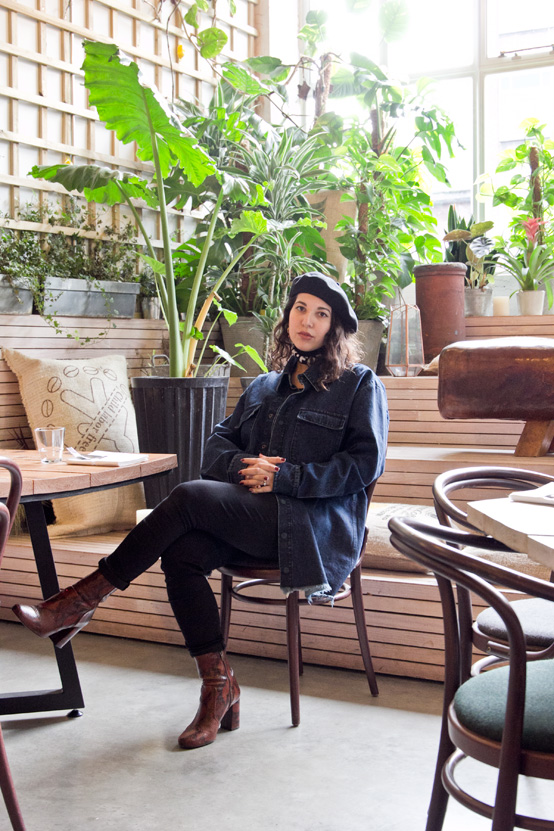 What she looks for in assistants: Discretion is really important. I’m always looking for loyalty, people who are interested in fashion but not so excited that it becomes annoying because that can be a bit much. They need to be hard-working: someone who isn’t afraid of staying in the office after 6pm and understands that things can happen very last minute because they might get a frantic call from me on the weekend asking them to come in on Monday at 7am. Loyalty is definitely the most important thing for me though. I can’t have someone tweeting saying that they’re with one of my clients in a certain hotel. I have had that happen before and the assistant did not last very long. When you’re working with young, excited people, things like that happen. I think in all of the years I’ve been doing this, I’ve only had three really good assistants.
What she looks for in assistants: Discretion is really important. I’m always looking for loyalty, people who are interested in fashion but not so excited that it becomes annoying because that can be a bit much. They need to be hard-working: someone who isn’t afraid of staying in the office after 6pm and understands that things can happen very last minute because they might get a frantic call from me on the weekend asking them to come in on Monday at 7am. Loyalty is definitely the most important thing for me though. I can’t have someone tweeting saying that they’re with one of my clients in a certain hotel. I have had that happen before and the assistant did not last very long. When you’re working with young, excited people, things like that happen. I think in all of the years I’ve been doing this, I’ve only had three really good assistants.
Establishing strong, longstanding relationships with her clients: I love that. I think you can really grow together. It’s so lovely to be able to go though those different stages together. It also makes the whole process feel more organic. When you’re working with someone new, it’s a lot more pressured. It’s like a one-off event with so much expectation around it. When you’ve worked with someone for years, it feels more comfortable. It’s exciting when you start in one place, knowing that you want to build to a certain level, and are able to look back in year’s time when you’ve got there. But even with those people I’ve worked for years, they’re all constantly evolving and growing. With each album there might be a different look or style. It’s often never the same thing. Each album is so nostalgic for me because it’s like a time capsule of what we were really interested and inspired by at the time. It’s also really interesting to see the trends that have emerged from those moments too. I remember when I first started working with Eliza [Doolittle]; all she would wear were shorts. It sounds crazy but I can’t tell you how difficult it was for me to find the perfect short high waisted denim shorts on the high street. I had to go vintage, so I was literally going to every store in London buying them all and scouring eBay too. I’m not saying that we started the trend with Eliza but after that, you definitely started seeing them everywhere. Even with our label, we’ve seen how styles we’ve created have trickled down. When Rihanna wore our beanies, everyone on the high street started making their own versions. It was a compliment in the beginning but it is frustrating. We’re a small brand so there’s no way we can compete with them when it comes to production. But at the same time, it definitely felt like a sign that we were going in the right direction.
Biggest lessons: I don’t take things too personally anymore. You’ve got to move with the times too and just keep creating. More than anything, I’ve learnt that it’s even more important now to be commercial and truly understand the business side of fashion than just creating. I can sit at home and create all day but I have to monetise those creations. I feel like the commercial and business side are all things I’ve had to learn over the years and in many ways, it’s made me hold back on the creative side because realistically, I want to make money. It’s still a learning process. Every day I’m learning new things about how to be more commercial or how to actually make it work in this industry. I don’t think I’ll ever stop learning. The industry is always changing and things like social media have changed things even further. I think it’s so important to always change with it.

